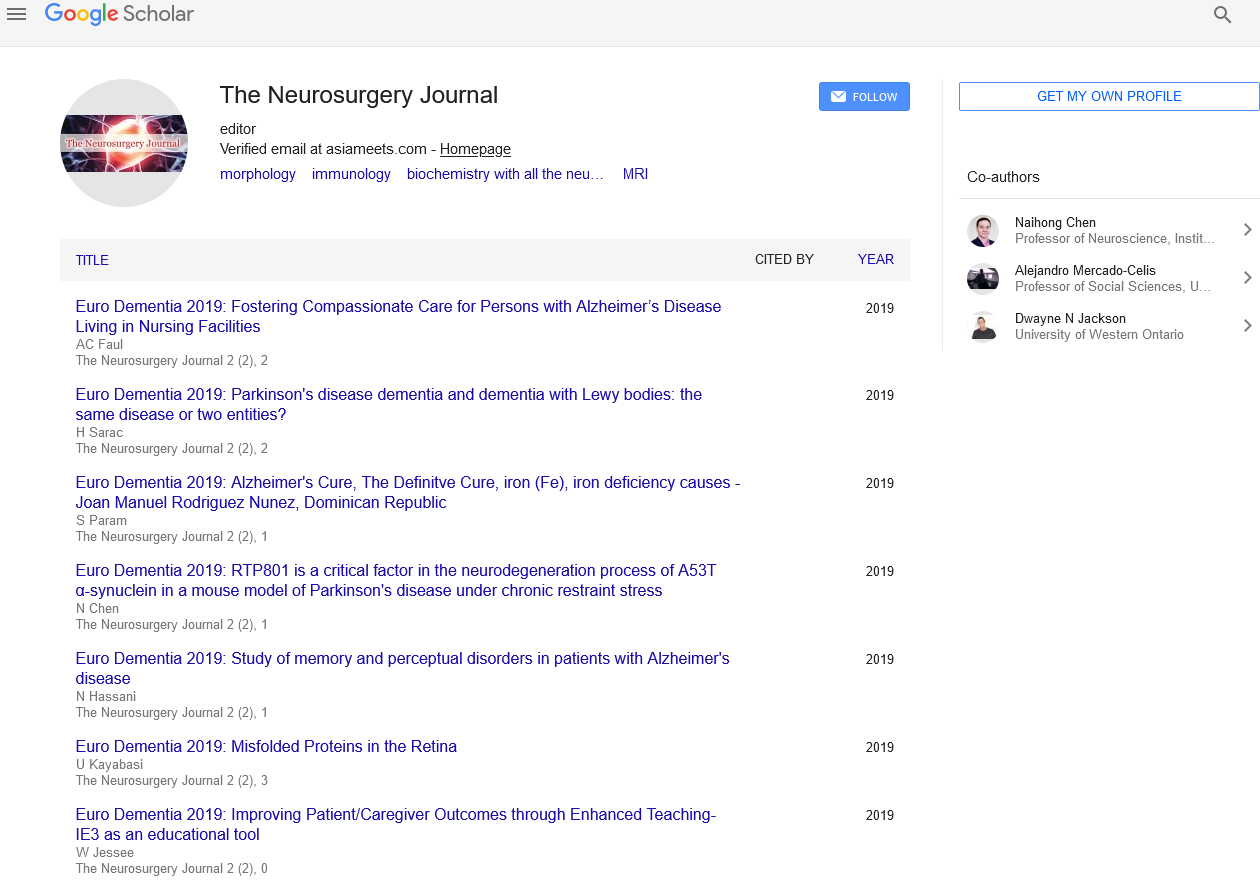Coherent techniques in Alzheimer’s disease
Received: 08-Dec-2021 Accepted Date: Dec 22, 2021; Published: 29-Dec-2021
Citation: Seifi A. Coherent techniques in Alzheimer’s disease. Neurosurg J Open Access. 2021;4(3):1.
This open-access article is distributed under the terms of the Creative Commons Attribution Non-Commercial License (CC BY-NC) (http://creativecommons.org/licenses/by-nc/4.0/), which permits reuse, distribution and reproduction of the article, provided that the original work is properly cited and the reuse is restricted to noncommercial purposes. For commercial reuse, contact reprints@pulsus.com
Description
Alzheimer`s disease (AD) and dementia are chronic diseases with progressive deterioration of cognition function, and behavior leading to severe disability and death. The prevalence of AD and dementia is constantly increasing because of the progressive aging of the population. These conditions represent a considerable challenge to patients, their family and caregivers, and the health system because of the considerable need for resources allocation. There is no disease modifying intervention for AD and dementia, and the symptomatic pharmacological treatments have limited efficacy and considerable side effects. Nonpharmacological treatment (NPT), which includes a wide range of approaches and techniques may play a role in the treatment of AD and dementia. Alzheimer`s disease (AD) affects millions worldwide. Currently, there are no treatments that prevent or slow AD.
Like other neurodegenerative diseases, AD is characterized by protein misfolding in the brain. This process and associated brain damage begins years prior to the substantial neuro degeneration that accompanies dementia. Studies utilizing new neuroimaging techniques and fluid biomarkers suggest that AD pathology can be detected preclinical. These advances should enable the design of new clinical trials and therapeutic interventions based on early mechanisms. The emergence of disease modification strategies to treat AD has increased the impetus for diagnosing disease in the early “preclinical” stages (before significant brain damage occurs). Fortunately, technological advances, and from our point of view, the definition of AD, may soon enable such pre-diagnosis. Since its first description in 19071, "amyloid plaque" and neurofibrillary tangles (NFTs) have been characteristic histo pathological features of AD and three diagnostic histo pathological criteria (Hachaturian, CERAD, NIA / Reagan). ) Is used. They are also associated with dementia caused by the disease.
However, it is clear that these lesions begin to grow in significant amounts in many "cognitively normal" elderly people5.To coordinate these contradictory conclusions / observations, some implicit hypotheses that continue to this day have been proposed: 1. AD cannot be diagnosed without cognitive impairment / dementia, 2. plaques and NFTs Increased with healthy aging, 3. AD and aging can be distinguished by a quantitative (non-qualitative) assessment of plaque and NFT exposure. Nevertheless, today's growing evidence supports different philosophies regarding the development of AD. Amyloid plaques and NFTs are actually (although not complete) inflammation nerve cells and axons regardless of cognitive status defines the disease process includes synaptic loss and dysfunction.
Alzheimer's disease (AD) consists of a process in which the quantity and quality of neural connections in the brain gradually diminish, consisting of a gradual loss of synaptic integrity and cognitive function. In recent years, much attention has been focused on AD classification and early detection using machine learning algorithms. There are several neuroimaging techniques that can be used to collect data and use it for classification tasks. The input data as an image helps the machine learning model identify various biomarkers in the AD classification. Beta amyloid plays a more important role in AD detection than other diseases because it can extract complex structures with several metal ions. Most researchers have enough data to focus on using 3D and 4D convolutional neural networks for AD classification.





